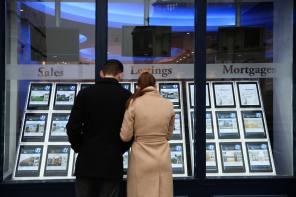

Annual house price growth in May increased to the highest level in nearly seven years, as the market bounced back from last year's lockdown dip.
Data published today (1 June) by Nationwide showed that house prices were up 10.9 per cent on May last year and 1.8 per cent month-on-month.
The average price of a property reached a record £242,832 - up £23,930 over the past 12 months.
In April, this figure was also a record high at the time of £238,831.
Robert Gardner, Nationwide's chief economist, said: “The market has seen a complete turnaround over the past twelve months.
“A year ago, activity collapsed in the wake of the first lockdown with housing transactions falling to a record low of 42,000 in April 2020.
“But activity surged towards the end of last year and into 2021, reaching a record high of 183,000 in March.”
These latest figures come as house price growth hit a six-year high at the end of last year as experts pointed to the chancellor's stamp duty holiday and a cultural shift in the wake of the coronavirus pandemic as causes for increased demand.
Commenting on today's figures Gardner said that although the original end date of the stamp duty holiday was behind a spike in transactions in March, a lot of momentum had been maintained since.
He said Nationwide research indicated that the extension to the stamp duty holiday was not the key factor, though it was impacting the timing of transactions.
“Amongst homeowners surveyed at the end of April that were either moving home or considering a move, three quarters (68 per cent) said this would have been the case even if the stamp duty holiday had not been extended.
“It is shifting housing preferences which is continuing to drive activity, with people reassessing their needs in the wake of the pandemic.”
At the end of April, 25 per cent of homeowners surveyed said they were either in the process of moving or considering a move as a result of the pandemic, only modestly below the 28 per cent recorded in September last year.
“Given that only around 5 per cent of the housing stock typically changes hands in a given year, it only requires a relatively small proportion of people to follow through on this to have a material impact,” he added.
However, Tracy Crookes, financial planner at Quilter said it was “unsurprising” that house price growth was in the double digits after the past year, with the market forced to a standstill in March 2020 and then “jump-started back to life” with various government support measures.
“Fuelled by the stamp duty holiday and the ‘space race’, many homeowners have reassessed their own living space during the pandemic and concluded that they need to move out of the city and into the suburbs or countryside in order to access a garden or outdoor space more easily.
“It really is a seller’s market at the moment, and with house prices at their highest level in nearly seven years it is a hostile environment for first time buyers who would have struggled to afford to buy even before the pandemic.”
Crookes said with prices now 10 per cent higher, the dream of home ownership was “even further out of reach” for many.
“We expect the strength of the property market to continue for the next few months at least, as a result of the extended stamp duty holiday and income support measures still available from the government,” she added.
“Once the stamp duty holiday begins tapering in June, along with the furlough scheme, we could see some of the momentum in the market begin to unwind.”
sonia.rach@ft.com
What do you think about the issues raised by this story? Email us on FTAletters@ft.com to let us know



